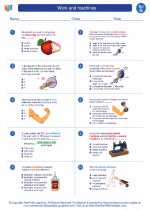Emulsion
An emulsion is a colloid of two or more immiscible liquids, where one liquid is dispersed in the form of small droplets within the other liquid. The two main types of emulsions are oil-in-water (o/w) and water-in-oil (w/o) emulsions. In an oil-in-water emulsion, oil droplets are dispersed in a continuous phase of water, while in a water-in-oil emulsion, water droplets are dispersed in a continuous phase of oil.
Properties of Emulsions
- Stability: Emulsions can be either stable or unstable, depending on factors such as the nature of the emulsifying agent, the droplet size, and the temperature.
- Viscosity: Emulsions often exhibit unique viscosity characteristics, which can impact their flow properties and applications.
- Optical Properties: Emulsions can scatter light, leading to effects such as opalescence or translucency.
- Rheology: The flow behavior of emulsions can be complex and is influenced by factors such as droplet size distribution and interfacial interactions.
Emulsifying Agents
Emulsifying agents are substances that can stabilize an emulsion by reducing the interfacial tension between the immiscible liquids. Common emulsifying agents include surfactants, which have both hydrophilic and hydrophobic regions that can interact with the different phases of the emulsion.
Applications of Emulsions
Emulsions have a wide range of practical applications in various industries, including food and beverage, pharmaceuticals, cosmetics, and agriculture. They are used to create products such as mayonnaise, salad dressings, creams, lotions, and pesticides.
Study Guide
When studying emulsions, it's important to understand the following key concepts:
- The definition of an emulsion and the difference between oil-in-water and water-in-oil emulsions.
- The properties of emulsions, including stability, viscosity, optical properties, and rheology.
- The role of emulsifying agents in stabilizing emulsions and the mechanisms involved in emulsification.
- The practical applications of emulsions in various industries and everyday products.
Additionally, it's helpful to explore examples of emulsions in real-world products and conduct simple experiments to demonstrate emulsion formation and stability.
.





